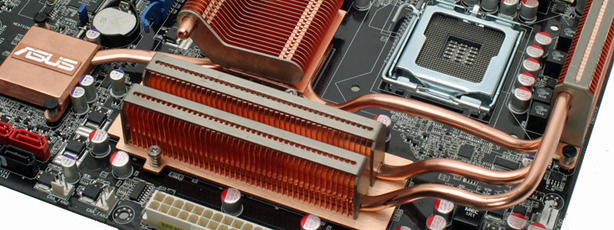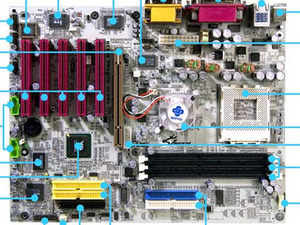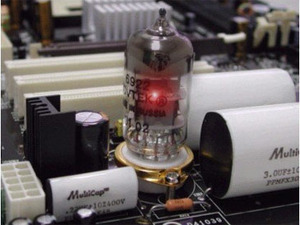So I'm re-writing this article for a third fourth time because penning this out has left me with mixed emotions – I feel I owe a warning to you. I had originally buried my head firmly in nostalgia with the intent of not bringing it up until things got more interesting again. I've tried to be optimistic, I really have... and in the end I found myself realising that it's not only the industry that needs re-education, it's the enthusiast community as well.
So there I am, late last year minding my own business, browsing around my various daily reads on the Internet when I came across an interesting article over at DailyTech, which discussed the state of the PC enthusiast industry. As I was reading his concerns, I started to get the impression that the author was gunning in the right direction. In the following days, I mulled the concept of what got me interested in PC hardware all those years ago and compared that to where we find ourselves today. It's not that I don't expect much in the future, I just think it's just becoming harder and harder for the companies to truly innovate and improve in the leaps and bounds we've seen before.
Since then, things have thinned out a bit, but is that for the better?
Firstly, some of these old boards were just, well, "weak" would be generous – the Vacuum tube thing that Aopen tried was great in concept and a ten out of ten for effort, but because it was so expensive and compromised on so many other features, no one really cared – the sound was still processed with AC’97 codecs that made it equate to eating a burger and fries with Sterling Silver tableware.
Last year, we all but saw Asus doing a virtual solo act on the (interesting) innovation front. Thankfully though, things are looking up a bit this year because, so far, we have seen quite a change – MSI's Ecolution Sterling engine cooler is an interesting concept for starters, while Gigabyte's Dynamic Energy Saver also warrants a mention.
Abit is hanging in by there by the skin of its teeth, even after being bought out a few years ago, Shuttle (thankfully) just makes its XPCs, while Soyo and Aopen are nowhere to be found. Niche products from DFI have resorted to lurking in the dark corners of just a few online retailers, and a large chunk of the engineering team was acquired by rival Foxconn – what's left seem to be contracted to reskinning boards for people like Sapphire.
Is this good for the market? All we're left with is a choice of three or four manufacturers and many, many products that create a similar Sea of Grey to the one in the graphics card market – should I buy the DS3, DS3L, DS3R, DS-something else that isn't a real choice?
OK, so at least now the chances of buying a "bad board" are much smaller – back then unstable or just plain rubbish motherboards filled the market like teenage acne, so finding something that genuinely worked well was a task only fit for Columbo. What few good boards there were out there were really good boards – and every enthusiast knew about one or more of them. Perhaps it's also not surprising that we've ended up this way, with no better example of "survival of the fittest" where the more consistently capable manufacturers have survived and expanded.

The Asus P5K3 Premium with 2GB of onboard DDR3 memory: Interesting and innovative, but essentially too expensive and un-upgradable
Despite this wealth of "decent" boards, there is still a ton of crap that no one ever needs and just adds to the expense: These days, every manufacturer has three letter auto-overclocking facilities: DOT, DOC, NOS, CIA, AI-something, or even in-Windows facilities that always look like they were designed by someone on acid – you couldn't get more colourful and swirly, yet completely unintuitive to anyone else but the designer.
In this respect, does it even matter what board you buy any more? Just recommend the (name of current favourite) chipset here and pick whatever fits your budget – the Intel P35 range is a perfect example of this fact with so many great boards on the market.
Since all these boards, even the cheap ones, work so well the title of "enthusiast" has changed in order for these companies to keep making money out of it – where it once was the same idea, now it's about building more expensive boards with every feature under the sun. Here, I’m referring to the Republic of Gamers and Quantum Force ranges out there. It's all about buying it for the look, for the oodles of features you'll never use and general e-peen extension. Back in the day, the real enthusiasts were people that bought relatively inexpensive products and made them into expensive ones. It was about extracting the maximum value and that doesn't correlate to these companies’ bottom lines.
So there I am, late last year minding my own business, browsing around my various daily reads on the Internet when I came across an interesting article over at DailyTech, which discussed the state of the PC enthusiast industry. As I was reading his concerns, I started to get the impression that the author was gunning in the right direction. In the following days, I mulled the concept of what got me interested in PC hardware all those years ago and compared that to where we find ourselves today. It's not that I don't expect much in the future, I just think it's just becoming harder and harder for the companies to truly innovate and improve in the leaps and bounds we've seen before.
From the top we have...
Let’s start at the backbone of the enthusiast’s PC and my particular area of speciality: the motherboard. Can you remember back to when there were more than just three major players? Back when Soyo’s Dragon socket A mobos were popular, when Aopen boards featured Vacuum tubes, and when Shuttle actually made motherboards and not just XPCs. At the time, Abit and DFI were major manufacturers in the enthusiast’s market and, generally speaking, everyone was playing on a multi-tiered field.Since then, things have thinned out a bit, but is that for the better?
Firstly, some of these old boards were just, well, "weak" would be generous – the Vacuum tube thing that Aopen tried was great in concept and a ten out of ten for effort, but because it was so expensive and compromised on so many other features, no one really cared – the sound was still processed with AC’97 codecs that made it equate to eating a burger and fries with Sterling Silver tableware.
Last year, we all but saw Asus doing a virtual solo act on the (interesting) innovation front. Thankfully though, things are looking up a bit this year because, so far, we have seen quite a change – MSI's Ecolution Sterling engine cooler is an interesting concept for starters, while Gigabyte's Dynamic Energy Saver also warrants a mention.
Abit is hanging in by there by the skin of its teeth, even after being bought out a few years ago, Shuttle (thankfully) just makes its XPCs, while Soyo and Aopen are nowhere to be found. Niche products from DFI have resorted to lurking in the dark corners of just a few online retailers, and a large chunk of the engineering team was acquired by rival Foxconn – what's left seem to be contracted to reskinning boards for people like Sapphire.
Is this good for the market? All we're left with is a choice of three or four manufacturers and many, many products that create a similar Sea of Grey to the one in the graphics card market – should I buy the DS3, DS3L, DS3R, DS-something else that isn't a real choice?
OK, so at least now the chances of buying a "bad board" are much smaller – back then unstable or just plain rubbish motherboards filled the market like teenage acne, so finding something that genuinely worked well was a task only fit for Columbo. What few good boards there were out there were really good boards – and every enthusiast knew about one or more of them. Perhaps it's also not surprising that we've ended up this way, with no better example of "survival of the fittest" where the more consistently capable manufacturers have survived and expanded.

The Asus P5K3 Premium with 2GB of onboard DDR3 memory: Interesting and innovative, but essentially too expensive and un-upgradable
Despite this wealth of "decent" boards, there is still a ton of crap that no one ever needs and just adds to the expense: These days, every manufacturer has three letter auto-overclocking facilities: DOT, DOC, NOS, CIA, AI-something, or even in-Windows facilities that always look like they were designed by someone on acid – you couldn't get more colourful and swirly, yet completely unintuitive to anyone else but the designer.
In this respect, does it even matter what board you buy any more? Just recommend the (name of current favourite) chipset here and pick whatever fits your budget – the Intel P35 range is a perfect example of this fact with so many great boards on the market.
Since all these boards, even the cheap ones, work so well the title of "enthusiast" has changed in order for these companies to keep making money out of it – where it once was the same idea, now it's about building more expensive boards with every feature under the sun. Here, I’m referring to the Republic of Gamers and Quantum Force ranges out there. It's all about buying it for the look, for the oodles of features you'll never use and general e-peen extension. Back in the day, the real enthusiasts were people that bought relatively inexpensive products and made them into expensive ones. It was about extracting the maximum value and that doesn't correlate to these companies’ bottom lines.

MSI MPG Velox 100R Chassis Review
October 14 2021 | 15:04












Want to comment? Please log in.